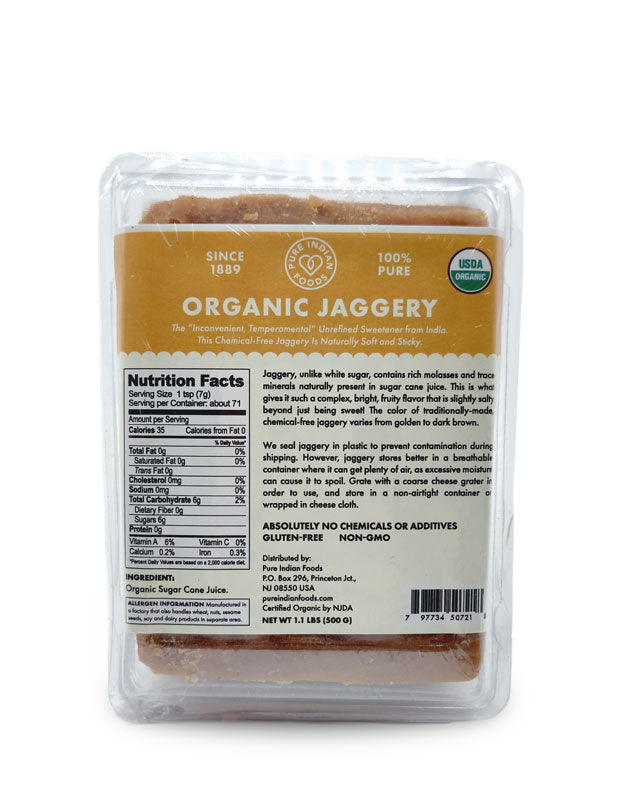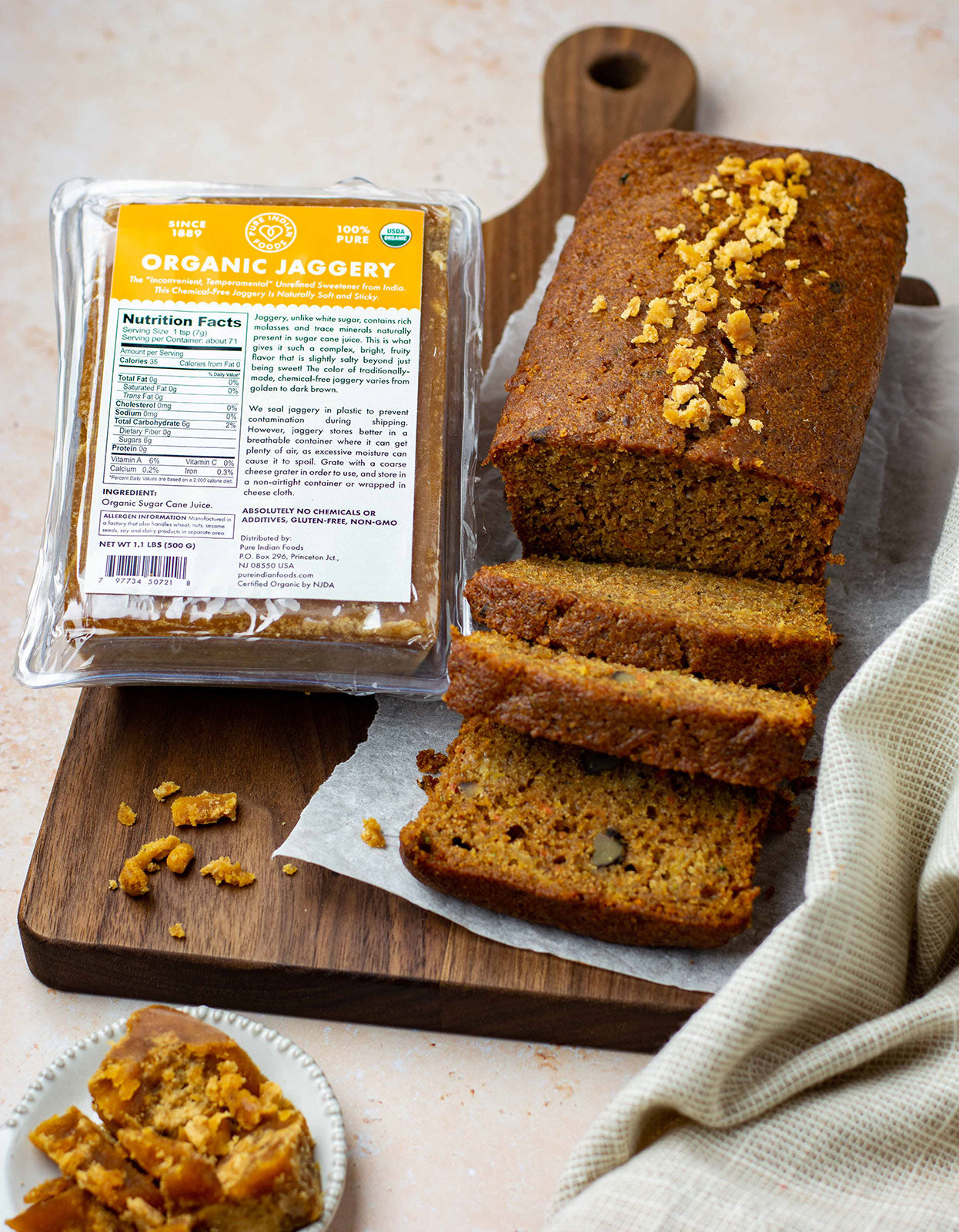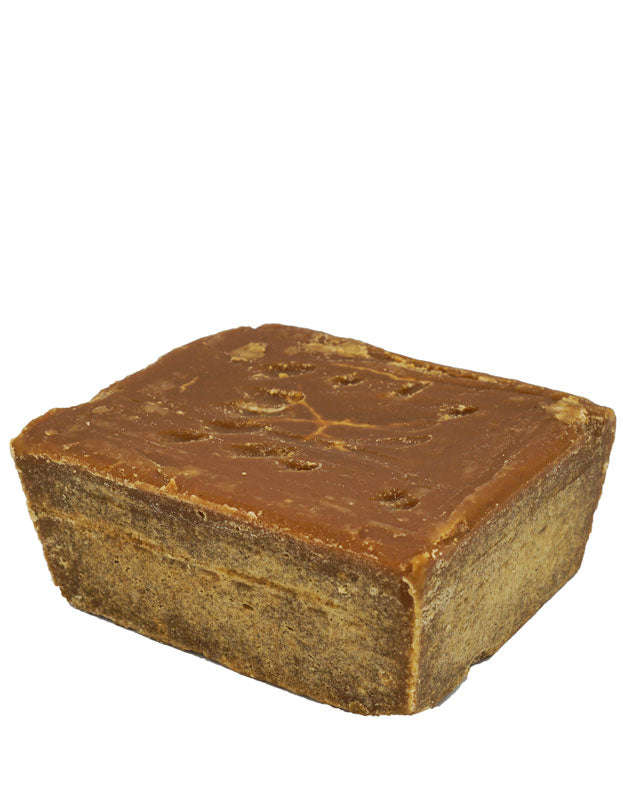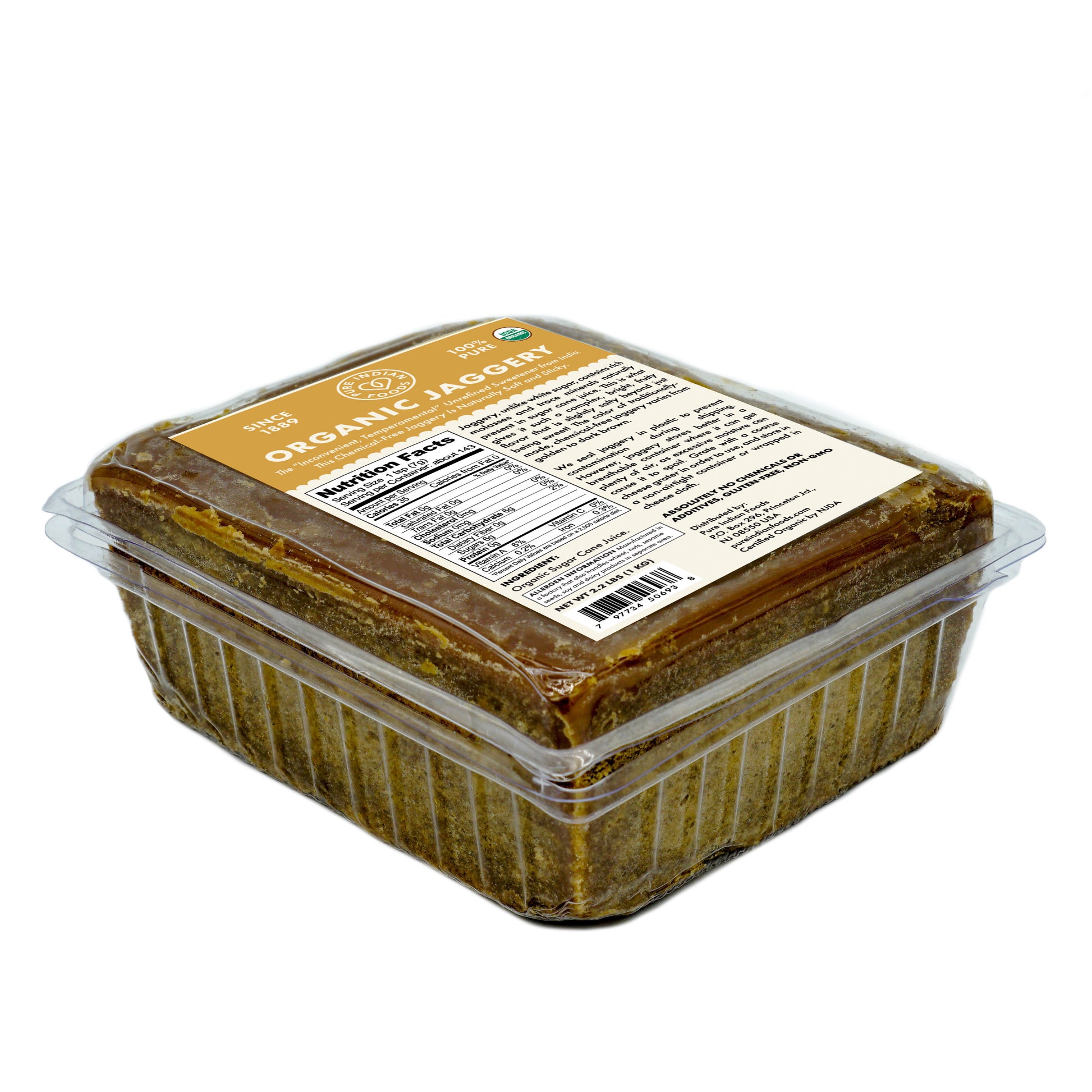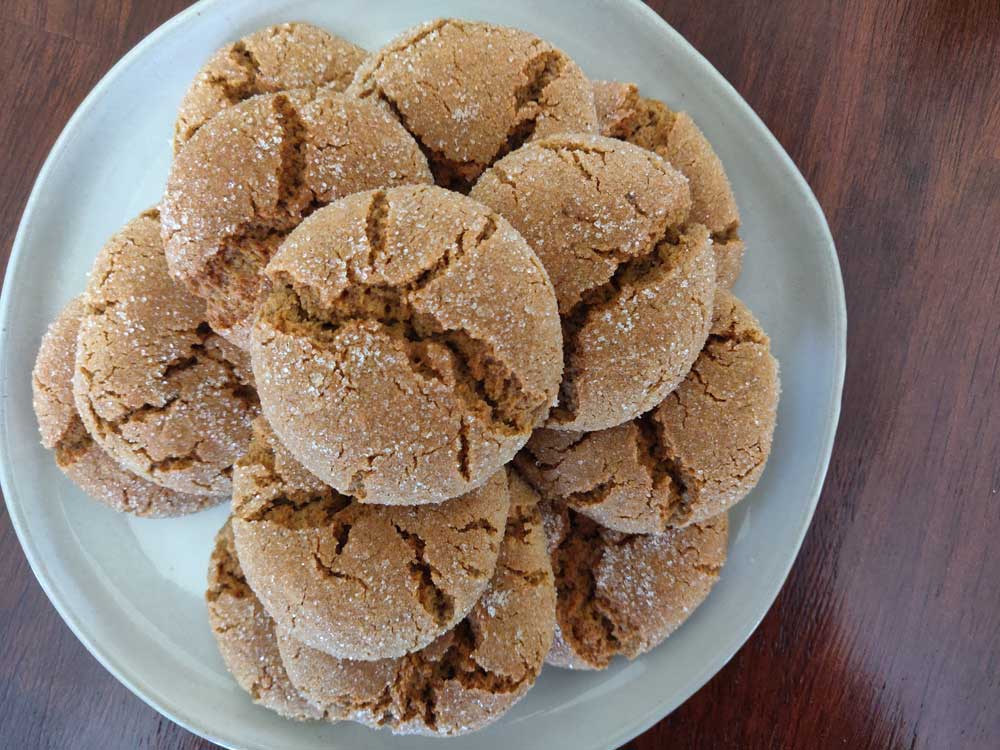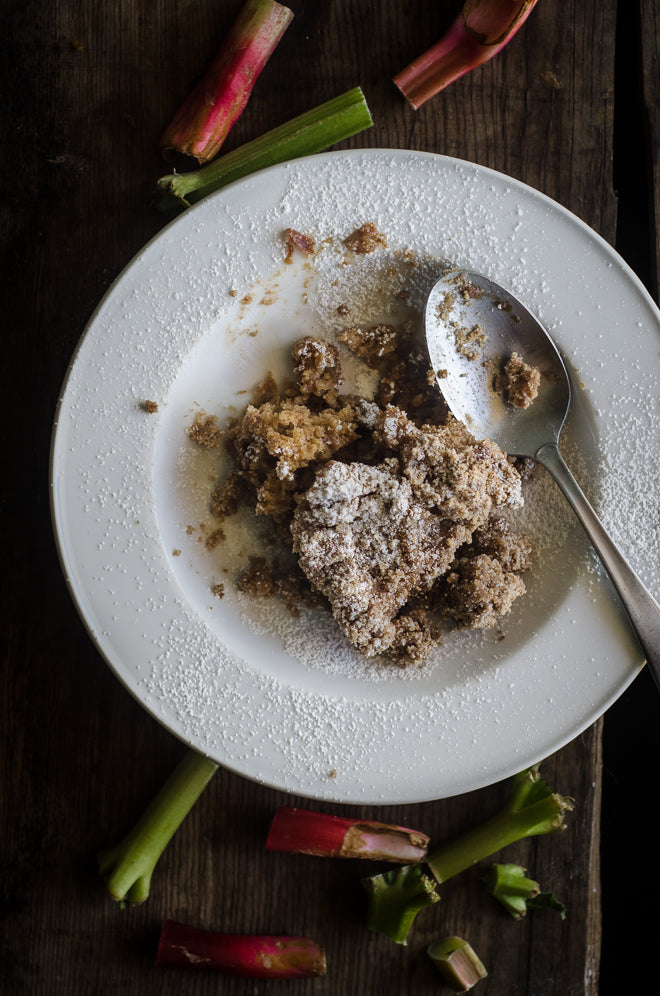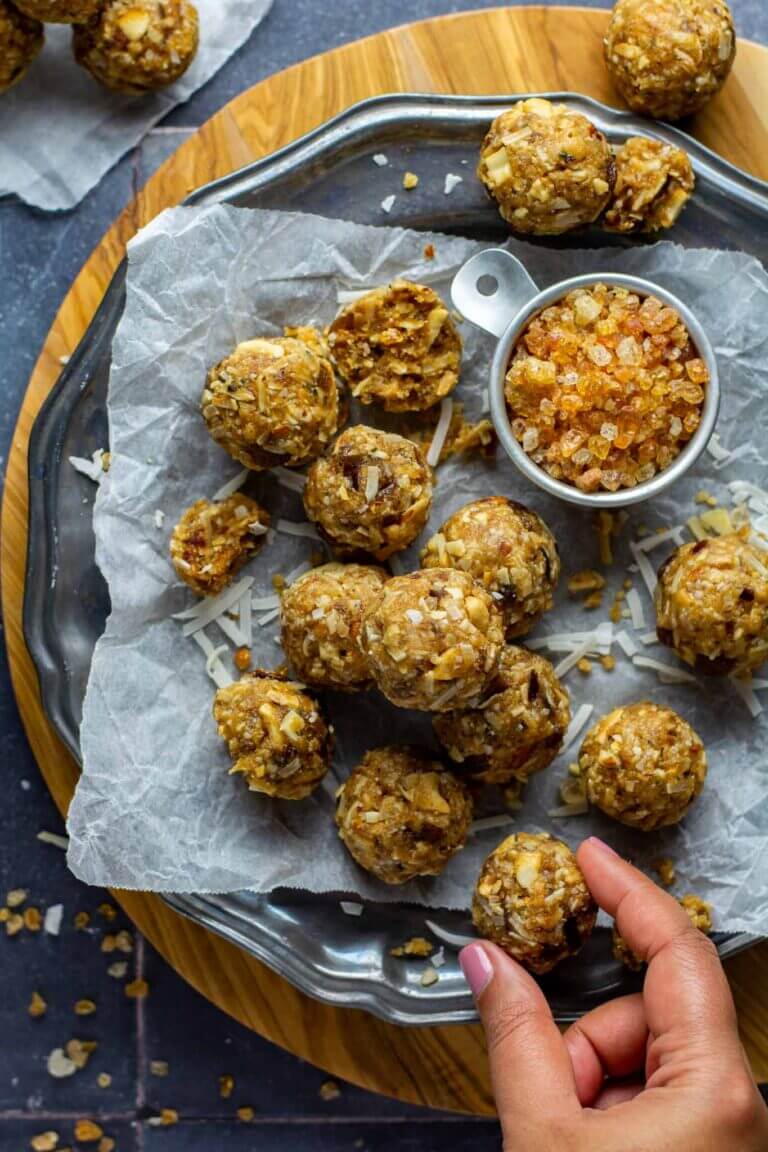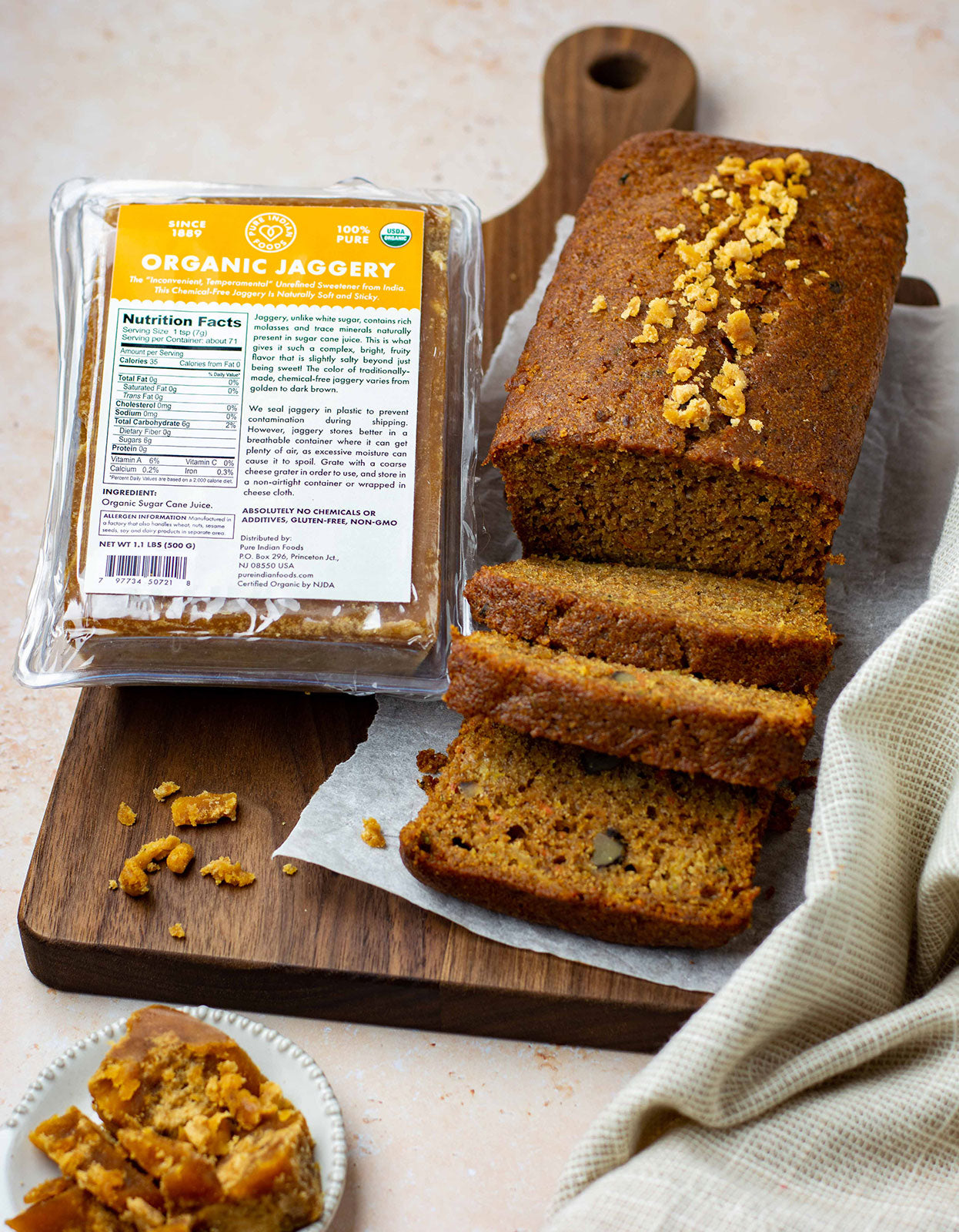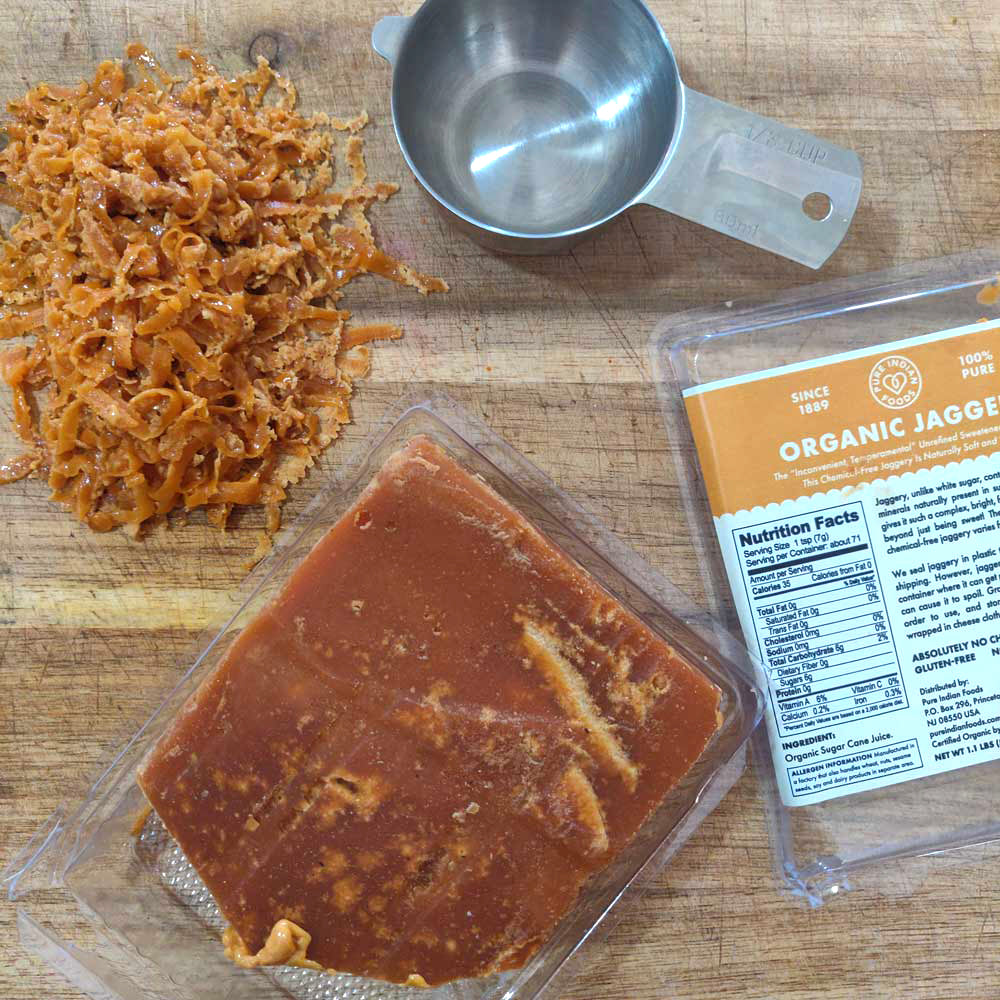
The "inconvenient, temperamental" unrefined sweetener from India.
Organic Jaggery
Unlike white sugar, this natural sweetener contains rich molasses and trace minerals naturally present in sugar cane juice. This gives it a complex, bright, fruity flavor that is beyond just being sweet! Jaggery has been used in traditional diets in India, Pakistan, Sri Lanka and Bangladesh for centuries.
Often called “gur” in India, "panela" in Mexico, and "rapadura" in Central and South America, jaggery is used in sweet and savory dishes as well as beverages. Because it is pressed from organic sugarcane, it retains natural vitamins and minerals not found in table sugar, such as potassium, magnesium, phosphorus, iron, and calcium. The color of traditionally-made, chemical-free panela varies from golden to dark brown. The texture can range from soft and moist to hard and dry.
This natural sweetener with its complex taste (sweet, bright, and fruity) is a staple in many cuisines worldwide. Panela, popular in Mexico, is often dissolved in hot beverages like coffee or used in desserts such as flan or rice pudding. Similarly, rapadura, a traditional sweetener in Brazil and Latin America, finds its way into recipes for candies, cakes, and sweet snacks. Meanwhile in India, it adds depth to savory dishes like curries and chutneys, as well as sweetness to desserts like laddoos and halwa. Whether enjoyed in a warm cup of tea or incorporated into a savory meal, this all-natural evaporated cane juice offers a wholesome alternative to refined sugar, adding both flavor and nutrients to a variety of dishes.
Tips for Cooking with Organic Panela
- Use equal amounts of or a little less panela than sugar in a recipe. Remember, panela is rich - both in flavor and nutrition, so a little bit can go a long way.
- If you keep our organic jaggery in the refrigerator, be sure to bring it to room temperature before using in a recipe.
- Mash with fingers or grate as much as you need using a regular cheese grater. For best results, use room temperature panela.
- Make “rapadura syrup” to use in recipes calling for liquid sweeteners such as honey, maple syrup, molasses, corn syrup, etc. For every tablespoon of organic rapadura, use one teaspoon of water. Blend or whisk well to make syrup. Because rapadura syrup is naturally sweet and rich, you can use less in your recipes. For example, if a recipe calls for ½ cup honey, try 1/3 cup rapadura syrup.
Common Questions
How is organic jaggery (panela) different from refined sugar?
How is organic jaggery (panela) different from refined sugar?
What texture is "correct" for jaggery (rapadura)?
What texture is "correct" for jaggery (rapadura)?
How should I store my organic jaggery?
How should I store my organic jaggery?
What is the recommended amount to take daily?
What is the recommended amount to take daily?
How do I grate it?
How do I grate it?
Recipes with Organic Jaggery
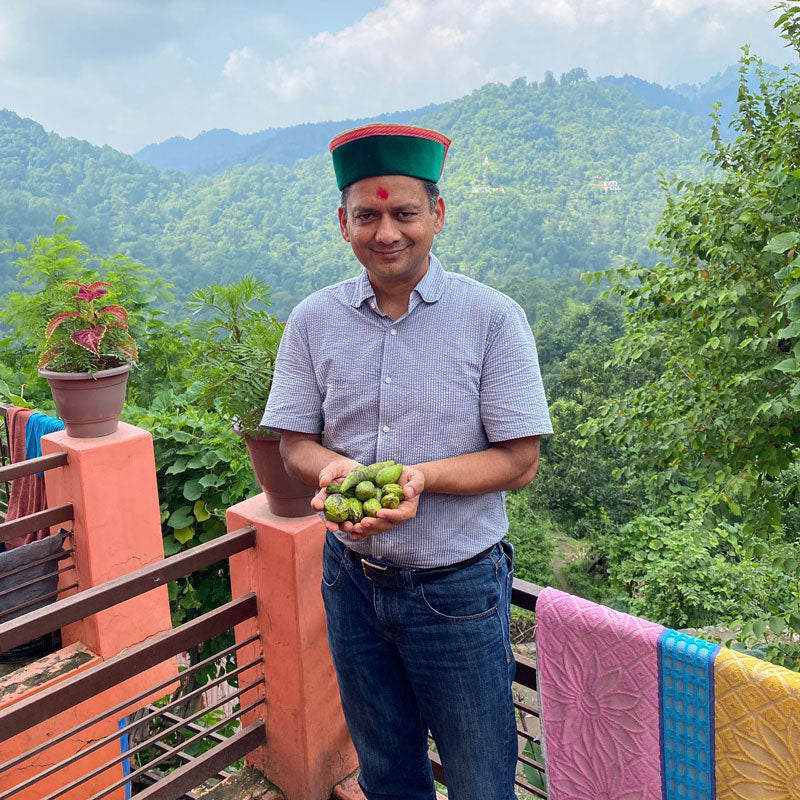
Hi! I'm Sandeep.
I travel to India, Asia, South America, and Europe to bring you back some of the most pristine, pure, organic clean ingredients in the world. All the products you'll find here at Pure Indian Foods are ones that me and my family use personally.
My family has been making ghee since 1889. Today, my wife, Nalini (aka "The Ghee Lady"), carries on this tradition. She still makes all the ghee and tightens every jar by hand.
We are passionate about bringing you traditional and nourishing foods. It's our labor of love and service to human-kind. Thank you for supporting our small family business.
